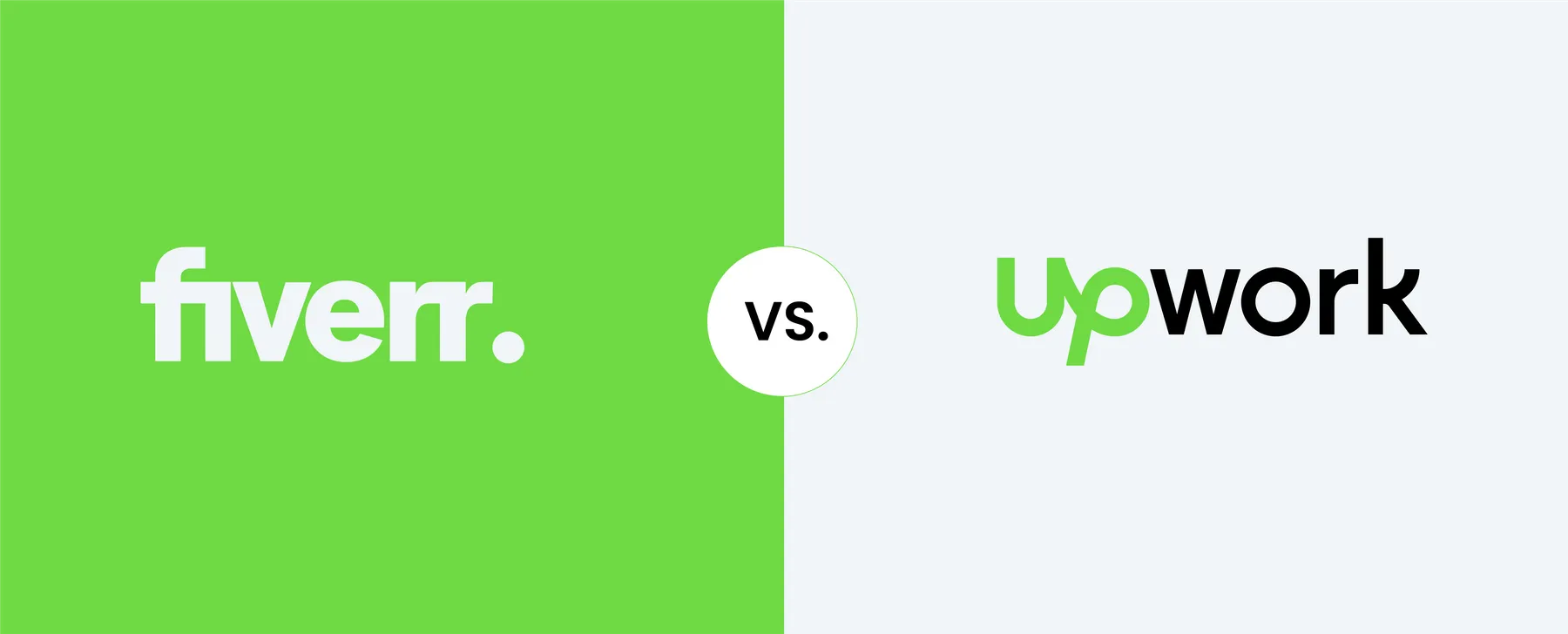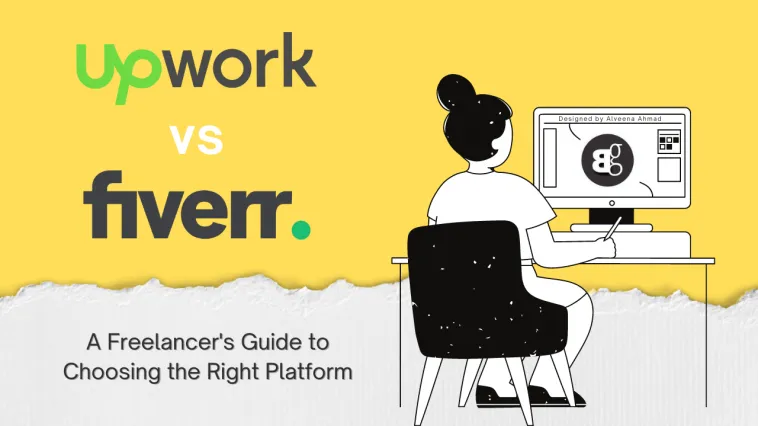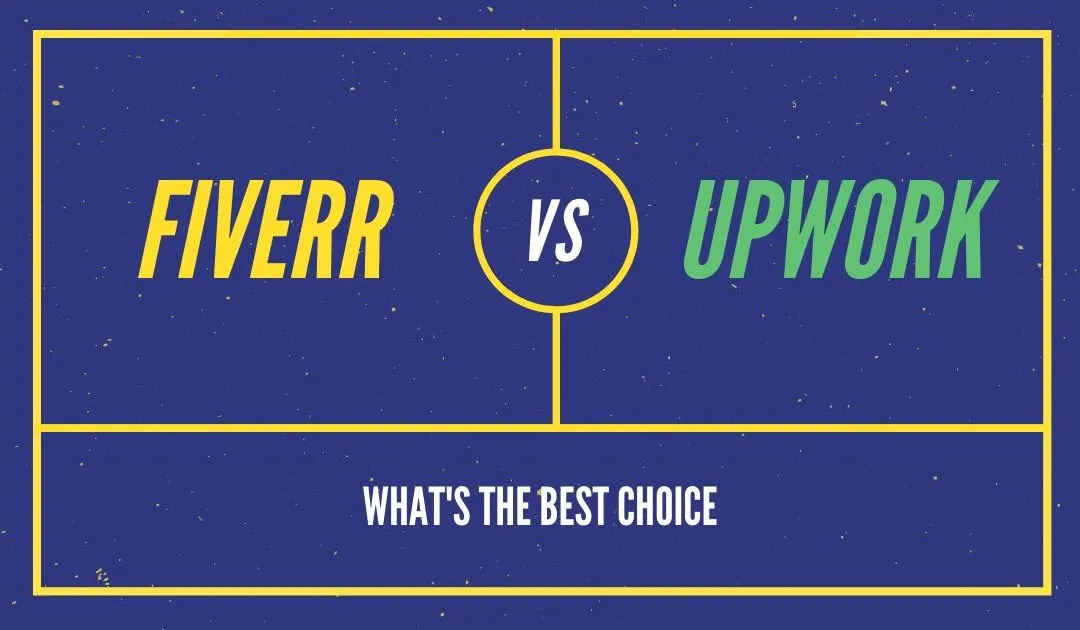When it comes to freelancing platforms, two names often come to mind: Fiverr and Upwork. Both have carved out their niches in the gig economy, offering unique features and benefits. But which one truly stands out as the best option for freelancers and clients alike? In this blog post, we’ll dive into the details of Fiverr, helping you understand how it works, what it offers, and who it’s best suited for.
Overview of Fiverr

Fiverr is a popular online marketplace that connects freelancers with clients looking for creative services. Established in 2010, it quickly gained traction for its easy-to-use interface and tiered pricing model. The platform's name comes from the idea that freelancers can offer services starting at just $5, although many gigs are priced higher, depending on the complexity and expertise required.
Here are some key features of Fiverr:
- Service Listings: Freelancers create listings to showcase their services, known as "gigs." Each gig can include descriptions, pricing, and delivery time.
- Tiered Pricing: Sellers can offer multiple pricing tiers for their gigs, allowing clients to select the option that best fits their needs.
- Categories: Fiverr covers a vast array of categories including graphic design, writing, marketing, video production, and more. This makes it easy for clients to find the right freelancer for their project.
- Reviews and Ratings: Clients can leave reviews and ratings after a project is completed, which helps build trust and credibility for freelancers.
- Fiverr Pro: This is a premium tier that features vetted professionals offering higher-quality services, providing an option for clients looking for expertise.
Overall, Fiverr is ideal for quick, budget-friendly projects where clients need a variety of services. However, it’s important to carefully review listings and ratings to ensure you find the right freelancer for your needs.
Also Read This: Does Fiverr Accept Visa Gift Cards?
Overview of Upwork

Upwork is a leading online platform that connects freelancers with businesses looking to hire talent for various projects. Founded in 2015 from the merger of Elance and oDesk, Upwork has carved a niche in the gig economy, boasting a vast pool of professional freelancers across numerous fields.
One of the standout features of Upwork is its broad range of job categories, which include:
- Writing and Translation
- Design and Creative
- Web Development
- Marketing
- Customer Service
- IT and Networking
- Admin Support
What makes Upwork appealing is its emphasis on long-term partnerships. Freelancers can build relationships with clients, enabling them to work on multiple projects together and grow their income steadily over time.
Another aspect that contributes to Upwork's popularity is the extensive vetting process for freelancers. Clients can find professionals with varying levels of experience, from entry-level to expert, making it easier to match the right freelancer to the right job. Additionally, Upwork provides robust tools for project management, communication, and payment processing, leaving both freelancers and clients with a seamless experience.
Also Read This: Starting Freelancing in Digital Marketing
Key Features Comparison

When comparing Fiverr and Upwork, it's essential to delve into their key features as they cater to different needs and preferences. Here's a side-by-side comparison highlighting some crucial factors:
| Feature | Fiverr | Upwork |
|---|---|---|
| Job Posting | Buyers browse and purchase predefined services (gigs). | Clients post jobs, and freelancers submit proposals. |
| Freelancer Vetting | Less stringent; service quality varies. | Rigorous screening with ratings and reviews. |
| Flexibility | Services priced starting at $5; gigs can provide set deliverables. | Greater flexibility in pricing and project scope. |
| Types of Work | More geared toward creative and digital services. | Broader range, including long-term projects across various sectors. |
| Payment Structure | Fixed-price gigs; clients pay upfront. | Hourly or fixed-price projects; payment released after completion. |
In summary, while Fiverr is fantastic for quick, predefined services, Upwork is ideal for businesses seeking to engage in deeper, long-term collaborations with freelancers. Understanding your specific needs will guide you toward the right platform!
Also Read This: How to Change Your Fiverr Gig Image: A Step-by-Step Guide
5. Pricing Structure
When deciding between Fiverr and Upwork, understanding the pricing structure is crucial. Both platforms operate on different pricing models, so let’s break them down.
Fiverr: At Fiverr, freelancers offer their services in the form of "gigs." Each gig has a set price, often starting at $5 but can go much higher depending on the complexity of the service. The pricing is transparent, meaning you know upfront what you will pay. Here’s a quick overview:
- Fixed Prices: Most gigs have a fixed price that includes the service offered.
- Add-Ons: Freelancers can offer extras for additional fees, letting you customize your order.
- Pro Services: Fiverr Pro gigs are priced at a premium, featuring qualified professionals.
Upwork: On the other hand, Upwork uses an hourly or project-based model which can be more flexible yet a bit complex. Here’s how it works:
- Hourly Rates: Freelancers set their hourly rates based on their skills and experience.
- Fixed-Price Projects: Clients can post projects with a specified budget and freelancers can bid on them.
- Service Fees: Upwork charges a sliding service fee based on earnings. The more you spend with a freelancer, the less percentage you will pay in fees.
In summary, if you prefer fixed pricing and the simplicity of gigs, Fiverr might be your best bet. However, if you like the flexibility of hiring based on various pay structures, Upwork could be more suitable.
Also Read This: Best android app for money earning in 2023
6. User Experience and Interface
Having a smooth user experience can make all the difference in how you interact with freelance platforms like Fiverr and Upwork. Both sites have their own distinct interfaces and user experiences designed to cater to different needs.
Fiverr: The Fiverr interface is designed to be user-friendly and visually appealing. Here are some features that enhance the experience:
- Simplicity: It’s straightforward to navigate, with categorized services displayed prominently.
- Search Functionality: The search bar and filters allow you to easily find what you need without scrolling endlessly.
- Profile Overviews: You can quickly assess freelancers through ratings, reviews, and portfolios, making it easier to make a decision.
Upwork: The Upwork interface, on the other hand, feels a bit more complex due to the wider range of features. Here’s what you might notice:
- Dashboard: A customizable dashboard allows you to keep track of your projects, proposals, and communications all in one place.
- Communication Tools: It offers integrated messaging and video call functions, allowing for seamless interactions with freelancers.
- Proposal System: The process for posting jobs and receiving proposals is a bit more detailed, requiring more involvement from both clients and freelancers.
In conclusion, Fiverr excels in simplicity and ease of navigation, making it ideal for those who want a straightforward experience. Meanwhile, Upwork provides a more comprehensive suite of tools, better suited for larger projects with intricate details. Your choice really depends on what you prioritize in a platform—simplicity or versatility.
Also Read This: Why Is It Called Fiverr?
7. Types of Services Offered
When it comes to freelancing platforms, one of the first things to consider is the range of services offered. Fiverr and Upwork cater to different needs, and understanding what each platform provides can help you decide which one fits your requirements best.
Fiverr is known for its gig-based model, where freelancers offer specific services starting at $5. This platform attracts freelancers from various fields, providing a wide assortment of services, including:
- Graphic Design
- Writing and Translation
- Digital Marketing
- Video and Animation
- Music and Audio Services
- Programming and Tech
- Business Services
- Lifestyle Services
Fiverr simplifies the decision-making process for buyers as they can browse through predefined gigs. The catch is that since many services start at $5, there can be a perception of lower quality.
On the other hand, Upwork offers a broader range of professional services. It’s more suited for complex and ongoing projects. Here are some of the major service categories you’ll find on Upwork:
- Web Development
- Content Writing
- Software Development
- Graphic Design
- Virtual Assistance
- Data Science and Analytics
Upwork allows freelancers to apply for jobs posted by clients, which can lead to more tailored matches, especially for long-term contracts.
In conclusion, if you're looking for quick, one-off tasks, Fiverr might be your best bet. If your needs are more specialized or project-based, consider exploring Upwork's offerings.
Also Read This: Can Companies Offer Services on Fiverr?
8. Target Audience
Understanding the target audience of each platform can shed light on which may be more beneficial for you, whether you're a freelancer or a client seeking services. Each marketplace serves distinct types of users.
Fiverr mainly attracts:
- Small Business Owners: Many solopreneurs and small companies use Fiverr for quick and affordable services, ranging from graphic design to social media management.
- Individual Consumers: Many individuals who need projects completed, such as logo designs or voiceovers, often find Fiverr to be an accessible option.
- Budget-Conscious Customers: If someone has a limited budget but needs a service done quickly, Fiverr’s gig system offers an attractive choice.
In contrast, Upwork attracts a different demographic that includes:
- Businesses with Ongoing Needs: Companies looking for long-term freelancers for regular tasks often prefer Upwork due to its job bidding system and freelancer management tools.
- Established Freelancers: Professionals who have built a portfolio typically flock to Upwork for better pay and more complex projects.
- Corporate Clients: Larger organizations often prefer Upwork when they need specialized skills for particular projects, as it allows them to directly interview potential hires.
Ultimately, the choice between Fiverr and Upwork boils down to your needs and the type of project at hand. It's vital to analyze who your target audience is and how each platform aligns with their requirements.
Also Read This: Table Tent Tactics: How to Make a Table Tent in Canva
9. Pros and Cons of Fiverr
Fiverr has carved a niche as a popular platform for freelancers looking to offer their skills in a variety of fields, so let's break down some of the advantages and disadvantages of using it.
Pros of Fiverr
- Affordability: Fiverr's gig-based model allows freelancers to set competitive prices, making it a budget-friendly option for buyers.
- Diverse Services: From graphic design to writing and voice-over work, you can find almost any service imaginable.
- Quick Turnaround: Many gigs are designed to be completed in a short period, so you can get your projects done fast.
- User-Friendly Interface: The platform is easy to navigate, making it simple for both buyers and sellers to connect and communicate.
- Global Talent Pool: You’ll find freelancers from all over the world, allowing for diverse perspectives and innovation.
Cons of Fiverr
- Quality Variability: With so many freelancers, the quality of services can vary significantly, requiring buyers to sift through an array of options.
- Service Fees: Fiverr takes a cut of the freelancer's income, which can sometimes lead to higher prices for the buyer.
- Limited Customization: Since many services are gig-based, there can be restrictions on how tailored the service can be.
- Dependence on Reviews: New sellers may struggle to attract clients without a strong review history.
- Time Zone Differences: Working with international freelancers can lead to communication delays due to time zone variations.
Also Read This: Charges for Freelance Architect Services
10. Pros and Cons of Upwork
Upwork is another major player in the freelance marketplace, and it has its own unique set of strengths and weaknesses. Let's explore these in detail.
Pros of Upwork
- Vast Talent Pool: Upwork is home to a large number of skilled freelancers across various fields, including programming, writing, and marketing.
- Flexibility: Freelancers can either work on a project basis or hourly, providing versatility for different types of work arrangements.
- Robust Job Listings: Clients can post detailed job descriptions, allowing freelancers to understand the requirements better and submit tailored proposals.
- Escrow Payment System: Upwork's escrow feature ensures that freelancers get paid for their work, protecting both parties in the transaction.
- Advanced Search Filters: Clients can use specific filters to find freelancers with the right skills and experience for their projects.
Cons of Upwork
- Service Fees: Upwork takes a commission from freelancers, which can be quite steep for smaller projects.
- Competitive Environment: With so many freelancers vying for the same jobs, it can be tough to stand out, especially for newcomers.
- Complexity: Some users may find the platform's interface and policies complicated to navigate initially.
- Quality Control: While there are talented freelancers, without proper vetting, clients may sometimes encounter subpar work.
- Longer Onboarding Time: The proposal process can take longer than simply ordering a gig, leading to potential delays in starting a project.
Also Read This: How to Get Fiverr Customers
Use Cases for Each Platform
When you’re diving into the world of freelancing platforms, it’s essential to understand which service aligns best with your needs. Fiverr and Upwork both have their unique strengths and use cases that can benefit freelancers and clients alike. Let’s break it down:
Fiverr Use Cases
Fiverr has earned its reputation as a go-to platform for quick, fixed-price services. Here are some typical scenarios where Fiverr shines:
- Small Projects: If you need a logo, a website mockup, or a social media post designed, Fiverr is perfect for quick turnaround tasks.
- Creative Services: It excels in offering design, writing, and video editing services.
- Standardized Tasks: Services are often offered in a tiered package format, making it easy to pick exactly what you need.
- Budget Constraints: With services starting as low as $5, it’s a budget-friendly option for startups or individuals needing short-term help.
Upwork Use Cases
Upwork is tailored for more extensive and ongoing projects that require careful vetting and collaboration. Consider Upwork for these scenarios:
- Long-Term Contracts: If you're looking for someone to manage your social media over several months or a developer for a large software project, Upwork is the right choice.
- Professional Services: Ideal for hiring consultants, accountants, and administrative support who bring specialized skills.
- Flexibility in Collaboration: With Upwork’s messaging apps and collaborative tools, it’s easier to engage in communication and project management.
- Custom Projects: Upwork allows for detailed job postings, making it ideal for customized projects requiring a skilled approach.
Conclusion
Choosing between Fiverr and Upwork involves weighing your specific needs against what each platform offers. Both have significant advantages, but understanding their distinctions is key to making the right choice.
If you need quick, budget-friendly gigs and straightforward tasks, Fiverr might be your best bet. Its structure allows for streamlined hiring and clear pricing, appealing to those who know what they want with precision. Think of it as a fast-food option for freelancers!
On the other hand, if you prefer a more in-depth selection process for complex projects, Upwork likely aligns better with your goals. Its versatility in allowing for long-term collaborations and more robust project management tools can enhance your project’s quality and outcome.
Ultimately, the best choice comes down to your specific requirements as a client or freelancer. So, consider your objectives, budget, and the type of work involved, and you’ll find the platform that aligns perfectly with your needs!



